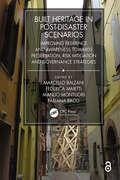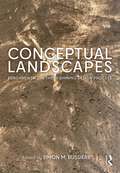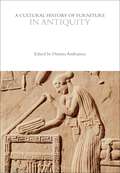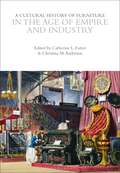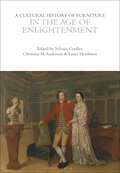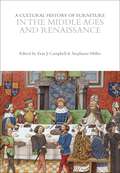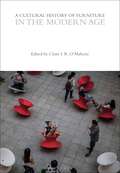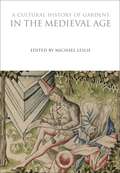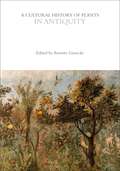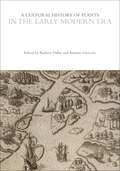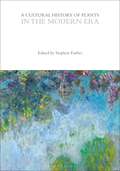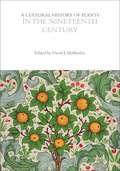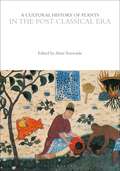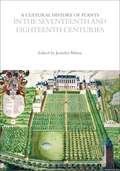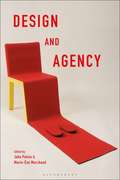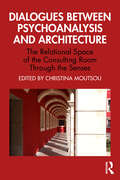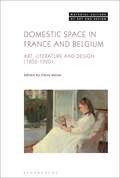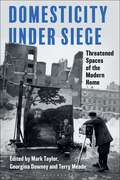- Table View
- List View
Built Heritage in post-Disaster Scenarios: Improving Resilience and Awareness Towards Preservation, Risk Mitigation and Governance Strategies
It is assumed that the impact of natural and man-made hazards on society in terms of damage cannot be avoided. To reduce potential disaster levels and to assess which policies have had a positive outcome, a careful comparison should take place on the procedures implemented in the management of crises.The experiences with the earthquakes in the Pianura Padana area and central regions of Italy in the last ten years have been incorporated in the 'After the Damages' advanced training project. This project aims to showcase recent innovations and advancements in post-disaster management, so as to take a more proactive role in post-disaster management, and to respond more effectively when disasters occur.This volume provides insights into the dynamics and negative effects of natural and man-made hazards (i.e., earthquakes, fires, floods, droughts, volcanic eruptions, etc.), including more updated approaches to deal with post-disaster phases. The book also offers tools to deal with possible international crisis scenarios and mitigate the social impact of vulnerabilities through risk reduction.Built Heritage in post-Disaster Scenarios aims at public administration managers, government agency representatives, international organizations, researchers, and professionals in architecture, engineering, and earth science.Marcello Balzani, Architect, PhD in "Representation and Survey", Full Professor of Representation at the Department of Architecture, University of Ferrara. President of Clust-ER Building and Construction. He is author of more than 200 publications on the themes of Drawing and Architectural and Urban Surveying, Project Representation, Management and Visualisation.Federica Maietti, Architect, PhD, Associate Professor in the Scientific Sector ICAR/17 at the Department of Architecture, University of Ferrara. Member of the DIAPReM Centre, since 2005 she carries out research activities in the fields of heritage documentation, survey and diagnostic investigations, in different national and international contexts, including Pompeii, Malta, Brazil, India, and Mexico. Scientific Manager of the International Academy "After the Damages", she is involved in several research activities and she is the author of more than two hundred publications in the field of Heritage Documentation, Survey and Representation.Manlio Montuori, Architect, PhD, former assistant professor non-tenured at the University of Ferrara, Department of Architecture, where he is a member of the Labo.R.A. The main field of his research is the conservation of architectural heritage and landscape, with special emphasis on preservation procedures for traditional and industrial built heritage. His research interests also address assessment and management in the context of damage and disaster risk reduction. Scientific Manager of the International Academy "After the Damages", he is involved in several research projects implementing ICT technologies in the conservation and structural health assessment of built and cultural heritage.Fabiana Raco, Architect, PhD RTDa Researcher of Drawing at the Department of Architecture, University of Ferrara. Technical coordinator of TekneHub Laboratory. Author of more than 50 publications on the topics of Drawing, Architectural and Urban Surveying, Representation, Diagnostics, Visualization and Project Management of interventions on built heritage.
Conceptual Landscapes: Fundamentals in the Beginning Design Process
Conceptual Landscapes explores the dilemma faced in the early moments of design thinking through a gradient of work in landscape and environmental design media by both emerging and well-established designers and educators of landscape architecture. It questions where and, more importantly, how the process of design starts. The book deconstructs the steps of conceptualizing design in order to reignite pedagogical discussions about timing and design fundamentals, and to reveal how the spark of an idea happens – from a range of unique perspectives. Through a careful arrangement of visual essays that integrate analog, digital, and mixed-media works and processes, the book highlights differences between diverse techniques and triggers debate between design, representation, technology, and creative culture in the field. Taken together, the book’s visual investigation of the conceptual design process serves as a learning tool for aspiring designers and seasoned professionals alike. By situating student work alongside that of experienced teachers and landscape architects, the book also demystifies outdated notions of individual genius and sheds new light on the nearly universally messy process of discovery, bridged across years and diverse creative vocabularies in the conceptual design process. Lavishly illustrated with over 210 full color images, this book is a must-read for students and instructors in landscape architecture.
A Cultural History of Furniture in Antiquity (The Cultural Histories Series)
Covering the period from 2500 BCE to the Byzantine Era, this volume focuses on the social history of furniture found in houses, tombs and temples as narrated through the archaeological evidence. The earliest furniture can be seen as an attempt by humans to enhance their safety, comfort and social standing but it can also offer opportunities for understanding human behavior, values and thought: fine furniture was among the most valuable of possessions in the ancient world so it expressed power, wealth and status. It was appreciated as art, used in diplomacy (both as a gift and as tribute) and recorded as booty. At the same time, its practical and ceremonial uses yield important clues about the domestic environment and daily life in antiquity, as well as revealing aspects of sacred belief and funerary practices.Drawing upon a wealth of visual and textual sources, this volume presents essays that examine key characteristics of the furniture of the period on the themes of Design and Motifs; Makers, Making, and Materials; Types and Uses; The Domestic Setting; The Public Setting; Exhibition and Display; Furniture and Architecture; Visual Representations; and Verbal Representations.
A Cultural History of Furniture in the Age of Empire and Industry (The Cultural Histories Series)
The 19th century in Western culture was a time of both confidence and turbulence. Industrial developments resulted in a number of benefits from a growing middle class to efficiency, convenience and innovation across a range of fields from engineering to architecture. Alongside these improvements, the century began with the extended period of the Napoleonic Wars and was further disrupted by rebellions and revolutions both within Europe and in India, South America and other parts of the world. Slavery was abolished and urbanization increased dramatically.These myriad developments were reflected throughout the period in the proliferation of types of furniture, along with their categorization as 'industrial art' at the international exhibitions and world fairs and the increasingly adventurous range of materials that were sometimes used in their construction. Nonetheless, a strong antiquarian/historicist strand also prompted interest in the revival of past styles in areas of art and design, including furniture. Drawing upon a wealth of visual and textual sources, this volume presents essays that examine key characteristics of the furniture of the period on the themes of Design and Motifs; Makers, Making, and Materials; Types and Uses; The Domestic Setting; The Public Setting; Exhibition and Display; Furniture and Architecture; Visual Representations; and Verbal Representations.
A Cultural History of Furniture in the Age of Enlightenment (The Cultural Histories Series)
The 18th century saw the height of court culture in Europe as well as the beginnings of its demise with conflicts such as the American and French Revolutions. The Scientific Revolution, which had begun in the preceding centuries, also ushered in a new intellectual era which advocated the use of reason to effect change in government and to advance progress in society. For furniture, this meant ever-higher standards of luxury in the designs, techniques and materials utilized for the best pieces, and more structure and specialization in the furniture-making process itself. Furniture also came into its own during this period as a collectable work of art on its own merits.Drawing upon a wealth of visual and textual sources, this volume presents essays that examine key characteristics of the furniture of the period on the themes of Design and Motifs; Makers, Making, and Materials; Types and Uses; The Domestic Setting; The Public Setting; Exhibition and Display; Furniture and Architecture; Visual Representations; and Verbal Representations.
A Cultural History of Furniture in the Middle Ages and Renaissance (The Cultural Histories Series)
The Middle Ages were marked by dramatic social, economic, political, and religious changes. Diverse regional and local conditions, and varied social classes - including peasant, artisan, merchant, clergy, nobility, and rulers - resulted in differing needs for furniture. The social settings for furniture included official and private residences both grand and humble, churches and monasteries, and civic institutions, including places of governance and learning, such as municipal halls, guild halls, and colleges. This volume explores how furniture contributed to the social fabric within these varied spaces.The chronological range of this volume extends from the fall of the Roman Empire through to the early Renaissance, a period which exhibited a wide array of types, styles, and motifs, including Byzantine, Romanesque, Gothic, and Renaissance. Rural and regional styles of furniture are also considered, as well as techniques of furniture manufacture. Drawing upon a wealth of visual and textual sources, this volume presents essays that examine key characteristics of the furniture of the period on the themes of Design and Motifs; Makers, Making, and Materials; Types and Uses; The Domestic Setting; The Public Setting; Exhibition and Display; Furniture and Architecture; Visual Representations; and Verbal Representations.
A Cultural History of Furniture in the Modern Age (The Cultural Histories Series)
Furniture is a unique witness to the transformations of private and public experience amidst the upheavals of the 20th century. How we work, rest and play are determined by the embodied encounter with furniture, defining and projecting a sense of identity and status, responding to and exemplifying contrasting social conditions, political and economic motivations, aesthetic predilections and debates. Assessing physical and archival evidence drawn from a spectrum of iconic and under-represented case studies, an international team of design historians collaborate in this volume to explore key methodological questions about how the production, consumption and mediation of furniture reveal shifting cultural habits and histories across diverse contexts amidst modernity. Drawing upon a wealth of visual and textual sources, this volume presents essays that examine key characteristics of the furniture of the period on the themes of Design and Motifs; Makers, Making, and Materials; Types and Uses; The Domestic Setting; The Public Setting; Exhibition and Display; Furniture and Architecture; Visual Representations; and Verbal Representations.
A Cultural History of Gardens in the Medieval Age (The Cultural Histories Series)
The Middle Ages was a time of great upheaval - the period between the seventh and fourteenth centuries saw great social, political and economic change. The radically distinct cultures of the Christian West, Byzantium, Persian-influenced Islam, and al-Andalus resulted in different responses to the garden arts of antiquity and different attitudes to the natural world and its artful manipulation. Yet these cultures interacted and communicated, trading plants, myths and texts. By the fifteenth century the garden as a cultural phenomenon was immensely sophisticated and a vital element in the way society saw itself and its relation to nature.A Cultural History of Gardens in the Medieval Age presents an overview of the period with essays on issues of design, types of gardens, planting, use and reception, issues of meaning, verbal and visual representation of gardens, and the relationship of gardens to the larger landscape.
A Cultural History of Plants in Antiquity (The Cultural Histories Series)
A Cultural History of Plants in Antiquity covers the period from 10,000 BCE to 500 CE. This period witnessed the transition from hunter-gatherer subsistence to the practice of agriculture in Mesopotamia and elsewhere, and culminated in the fall of the Roman Empire, the end of the Han Dynasty in China, the rise of Byzantium, and the first flowering of Mayan civilization. Human uses for and understanding of plants drove cultural evolution and were inextricably bound to all aspects of cultural practice. The growth of botanical knowledge was fundamental to the development of agriculture, technology, medicine, and science, as well as to the birth of cities, the rise of religions and mythologies, and the creation of works of literature and art. The 6 volume set of the Cultural History of Plants presents the first comprehensive history of the uses and meanings of plants from prehistory to today. The themes covered in each volume are plants as staple foods; plants as luxury foods; trade and exploration; plant technology and science; plants and medicine; plants in culture; plants as natural ornaments; the representation of plants. Annette Giesecke is Professor of Classics at the University of Delaware, USA. Volume 1 in the Cultural History of Plants set.General Editors: Annette Giesecke, University of Delaware, USA, and David Mabberley, University of Oxford, UK.
A Cultural History of Plants in the Early Modern Era (The Cultural Histories Series)
A Cultural History of Plants in the Early Modern Era covers the period from 1400 to 1650, a time of discovery and rediscovery, of experiment and innovation. Renaissance learning brought ancient knowledge to modern European consciousness whilst exploration placed all the continents in contact with one another. The dissemination of knowledge was further speeded by the spread of printing. New staples and spices, new botanical medicines, and new garden plants all catalysed agriculture, trade, and science. The great medical botanists of the period attempted no less than what Marlowe's Dr Faustus demanded - a book “wherein I might see all plants, herbs, and trees that grow upon the earth.” Human impact on plants and our botanical knowledge had irrevocably changed. The 6 volume set of the Cultural History of Plants presents the first comprehensive history of the uses and meanings of plants from prehistory to today. The themes covered in each volume are plants as staple foods; plants as luxury foods; trade and exploration; plant technology and science; plants and medicine; plants in culture; plants as natural ornaments; the representation of plants. Andrew Dalby is an independent scholar and writer, based in France. Annette Giesecke is Professor of Classics at the University of Delaware, USA. Volume 3 in the Cultural History of Plants set.General Editors: Annette Giesecke, University of Delaware, USA, and David Mabberley, University of Oxford, UK.
A Cultural History of Plants in the Modern Era (The Cultural Histories Series)
A Cultural History of Plants in the Modern Era covers the period from 1920 to today - a time when population growth, industrialization, global trade, and consumerism have fundamentally reshaped our relationship with plants. Advances in agriculture, science, and technology have revolutionised the ways we feed ourselves, whilst urbanization and industrial processing have reduced our direct connection with living plants. At the same time, our understanding of both ecology and conservation have greatly increased and our appreciation of the meanings and aesthetics of plants continue to suffuse art and everyday culture. The modern era has witnessed a revolution in both the valuation and the destruction of the natural world - more than ever before, we understand that the vitality of our relationship with plants will shape our future. The 6 volume set of the Cultural History of Plants presents the first comprehensive history of the uses and meanings of plants from prehistory to today. The themes covered in each volume are plants as staple foods; plants as luxury foods; trade and exploration; plant technology and science; plants and medicine; plants in culture; plants as natural ornaments; the representation of plants.Stephen Forbes is an independent scholar and writer, based in Australia. Volume 6 in the Cultural History of Plants set.General Editors: Annette Giesecke, University of Delaware, USA, and David Mabberley, University of Oxford, UK.
A Cultural History of Plants in the Nineteenth Century (The Cultural Histories Series)
A Cultural History of Plants in the Nineteenth Century covers the period from 1800 to 1920, a time of astonishing growth in industrialization, urbanization, migration, population growth, colonial possessions, and developments in scientific knowledge. As European modes of civilization and cultivation were exported worldwide, botanical study was revolutionized – through the work of Charles Darwin and many others – and the new science of biology was born, based on cells, nuclei and molecules. As Darwinism took hold, plants came to be seen as a way of thinking about the connectivity of nature and life itself. The 6 volume set of the Cultural History of Plants presents the first comprehensive history of the uses and meanings of plants from prehistory to today. The themes covered in each volume are plants as staple foods; plants as luxury foods; trade and exploration; plant technology and science; plants and medicine; plants in culture; plants as natural ornaments; the representation of plants. David Mabberley is Emeritus Fellow at Wadham College, University of Oxford, UK; Emeritus Professor at the University of Leiden, The Netherlands; and Adjunct Professor at Macquarie University, Australia. Volume 5 in the Cultural History of Plants set.General Editors: Annette Giesecke, University of Delaware, USA, and David Mabberley, University of Oxford, UK.
A Cultural History of Plants in the Post-Classical Era (The Cultural Histories Series)
A Cultural History of Plants in the Post-Classical Era covers the period from 500 to 1400, ranging across northern and central Europe to the Mediterranean, and from the Byzantine and Arabic Empires to the Persian World, India, and China. This was an age of empires and fluctuating borders, presenting a changing mosaic of environments, populations, and cultural practices. Many of the ancient uses and meanings of plants were preserved, but these were overlaid with new developments in agriculture, landscapes, medicine, eating habits, and art.The six-volume set of the Cultural History of Plants presents the first comprehensive history of the uses and meanings of plants from prehistory to today. The themes covered in each volume are plants as staple foods; plants as luxury foods; trade and exploration; plant technology and science; plants and medicine; plants in culture; plants as natural ornaments; the representation of plants.Alain Touwaide is Scientific Director at the Institute for the Preservation of Medical Traditions, Washington, D.C., USA.A Cultural History of Plants in the Post-Classical Era is the second volume in the six-volume set, A Cultural History of Plants, also available online as part of Bloomsbury Cultural History, a fully-searchable digital library (see www.bloomsburyculturalhistory.com).General Editors: Annette Giesecke, University of Delaware, USA, and David Mabberley, University of Oxford, UK.
A Cultural History of Plants in the Seventeenth and Eighteenth Centuries (The Cultural Histories Series)
A Cultural History of Plants in the Seventeenth and Eighteenth Centuries covers the period from 1650 to 1800,a time of global exploration and the discovery of new species of plants and their potential uses. Trade routes were established which brought Europeans into direct contact with the plants and people of Asia, Oceania, Africa and the Americas. Foreign and exotic plants become objects of cultivation, collection, and display, whilst the applications of plants became central not only to naturalists, landowners, and gardeners but also to philosophers, artists, merchants, scientists, and rulers. As the Enlightenment took hold, the natural world became something to be grasped through reasoned understanding. The 6 volume set of the Cultural History of Plants presents the first comprehensive history of the uses and meanings of plants from prehistory to today. The themes covered in each volume are plants as staple foods; plants as luxury foods; trade and exploration; plant technology and science; plants and medicine; plants in culture; plants as natural ornaments; the representation of plants. Jennifer Milam is Pro Vice-Chancellor and Professor of Art History, University of Newcastle, Australia. Volume 4 in the Cultural History of Plants set.General Editors: Annette Giesecke, University of Delaware, USA, and David Mabberley, University of Oxford, UK.
Cutlery and Plate (Large Print)
This is a picture of some cutlery and a plate. There is a locator dot shown, which will be at the top left of the page when the image is the right way up. In the middle of the page is a round dinner plate. To the left of the plate is a fork with its pointy prongs. Above the plate there is a spoon with its handle on the right of the page. On the right of the plate is a knife - the top part is the blade with sharp teeth on it.
Cutlery and Plate (UEB Contracted)
This is a picture of some cutlery and a plate. There is a locator dot shown, which will be at the top left of the page when the image is the right way up. In the middle of the page is a round dinner plate. To the left of the plate is a fork with its pointy prongs. Above the plate there is a spoon with its handle on the right of the page. On the right of the plate is a knife - the top part is the blade with sharp teeth on it.
Cutlery and Plate (UEB Uncontracted)
This is a picture of some cutlery and a plate. There is a locator dot shown, which will be at the top left of the page when the image is the right way up. In the middle of the page is a round dinner plate. To the left of the plate is a fork with its pointy prongs. Above the plate there is a spoon with its handle on the right of the page. On the right of the plate is a knife - the top part is the blade with sharp teeth on it.
Design and Agency: Critical Perspectives on Identities, Histories, and Practices
Design and Agency brings together leading international design scholars and practitioners to address the concept of agency in relation to objects, organisations and people. The authors set out to expand the scope of design history and practice, avoiding the heroic narratives of a typical modernist approach. They consider both how the agents of design construct and express their identities and subjectivities through practice, while also investigating the distinctive contribution of design in the construction of individual identity and subjectivity. Individual chapters explore notions of agency in a range of design disciplines and historical periods, including the agency of women in effecting changes to the design of offices and working practices; the role of Jeffrey Lindsay and Buckminster Fuller in developing the design of a geodesic dome; Le Corbusier's 'Casa Curutchet'; a re-consideration of the gendered historiography of the 'Jugendstil' movement, and Bruce Mau's design exhibitions. Taken together, the essays in Design and Agency provide a much-needed response to the traditional texts which dominate design history. With a broad chronological span from 1900 to the present, and an equally broad understanding of the term 'design', it expands how we view the discipline, and shows how design itself can be an agent for social, cultural and economic change.
Detached house with garage (Large Print)
This image shows a front view of a detached house with attached garage. There is a locator dot shown, which will be at the top left of the page when the image is the right way up. The pointed tiled roof of the house fills the upper part of the page, with a chimney sticking up towards the right. Down from the roof the upstairs windows are shown: a large one towards the right and a smaller one to its left. Just to the left of the smaller window, the tiled garage roof slopes down above the wide garage door which has a handle towards its lower centre. The door to the house itself is towards the centre at the bottom of the image. The door is glazed at the top, and the letterbox and door knob are shown. There is a narrow window adjoining the door on the garage side. A large window is shown in the lower right of the image, and all the windows have sills.
Detached house with garage (UEB Contracted)
This image shows a front view of a detached house with attached garage. There is a locator dot shown, which will be at the top left of the page when the image is the right way up. The pointed tiled roof of the house fills the upper part of the page, with a chimney sticking up towards the right. Down from the roof the upstairs windows are shown: a large one towards the right and a smaller one to its left. Just to the left of the smaller window, the tiled garage roof slopes down above the wide garage door which has a handle towards its lower centre. The door to the house itself is towards the centre at the bottom of the image. The door is glazed at the top, and the letterbox and door knob are shown. There is a narrow window adjoining the door on the garage side. A large window is shown in the lower right of the image, and all the windows have sills.
Detached house with garage (UEB uncontracted)
This image shows a front view of a detached house with attached garage. There is a locator dot shown, which will be at the top left of the page when the image is the right way up. The pointed tiled roof of the house fills the upper part of the page, with a chimney sticking up towards the right. Down from the roof the upstairs windows are shown: a large one towards the right and a smaller one to its left. Just to the left of the smaller window, the tiled garage roof slopes down above the wide garage door which has a handle towards its lower centre. The door to the house itself is towards the centre at the bottom of the image. The door is glazed at the top, and the letterbox and door knob are shown. There is a narrow window adjoining the door on the garage side. A large window is shown in the lower right of the image, and all the windows have sills.
Dialogues between Psychoanalysis and Architecture: The Relational Space of the Consulting Room Through the Senses
Dialogues between Psychoanalysis and Architecture explores the multisensory space of therapy, real or virtual, and how important it is in providing the container for the therapeutic relationship and process. This book is highly original in bringing psychoanalysis and architecture together and highlighting how both disciplines strive to achieve transformation of our psychic space. It brings together contributions that comprise three parts: the first explores the space of the consulting room through the senses to examine issues such as smell and its link with memory and belonging, hearing out the Other, the psychoanalytic couch, the medical therapy room and the so-called sixth sense; secondly, the book questions how the consulting room can represent or be redesigned to reflect the philosophy that underlies the therapy process, foregrounding an architectural point of view; and thirdly, the book attends to the significance of the consulting room as a virtual space, as it emerged during the pandemic of COVID-19 and beyond. Architectural, psychotherapeutic and interdisciplinary perspectives allow for an important new dimension on the psychological use of space, and will appeal to psychoanalysts, psychoanalytic and integrative psychotherapists, art therapists, students of psychotherapy, as well as architects and designers.
Domestic Space in France and Belgium: Art, Literature and Design, 1850-1920 (Material Culture of Art and Design)
Domestic Space in France and Belgium offers a new addition to the growing body of work in Interior Studies. Focused on late 19th and early 20th-century France and Belgium, it addresses an overlooked area of modernity: the domestic sphere and its conception and representation in art, literature and material culture. Scholars from the US, UK, France, Italy, Canada and Belgium offer fresh and exciting interpretations of artworks, texts and modern homes. Comparative and interdisciplinary, it shows through a series of case-studies in literature, art and architecture, how modernity was expressed through domestic life at the turn of the century in France and Belgium.
Domesticity Under Siege: Threatened Spaces of the Modern Home
Theories of the domestic stemming from the 19th century have focused on the home as a refuge and place of repose for the family, a nurturing environment for children and a safe place for visitors. Under this conception, domestic space is positioned as nurturing and private, a refuge and place of retreat which gave rise to theories of 'home as haven'. While, arguably, some social conditions might suggest this is the case, Domesticity Under Siege exposes a different world, one in which the boundaries of nurturing domesticity collide with both outside and inside agents.Whether these agents are external military forces, psychological trauma or familial violence, they re-position meta-narratives of domesticity, not through identity politics or specialized subgroup experience, but relative to the actions of the world around an inhabited domain. That is, when home is constituted as a private realm, a place where individuals or groups can reside in 'safety and comfort', it is argued as a place in which the individual exercises control or power. However, there are many occasions when forces act upon the home and threaten aspects of safety and comfort, often through such things as ruination, violence, mortality, and infestation.Organised around four thematic sections, 'Microbes, Animals and Insects', 'Human Agents', Wars and Disasters as Agents' and 'Hauntings, Eeriness and the Uncanny', chapters provide a range of approaches to the home which challenge notions of 'haven' and reflect major causes that have played an important role in undermining the modern home. Examples and case studies explore the domestic screen, hoarding, hauntings, violence and imprisonment in the home, wartime interior art, the Hanover Merzbau and Wolfgang Staudte's 1946 film Die Mörder sind unter uns ('The Murderers are Among Us').
Door Key (Large Print)
This picture is of a door key. There is a locator dot shown, which will be at the top left of the page when the image is the right way up. At the top is the handle of the key with a hole in it, and at the bottom is the part of the key that goes into the lock. On the left side of this are the pointed teeth and there is a groove going down to the right.
